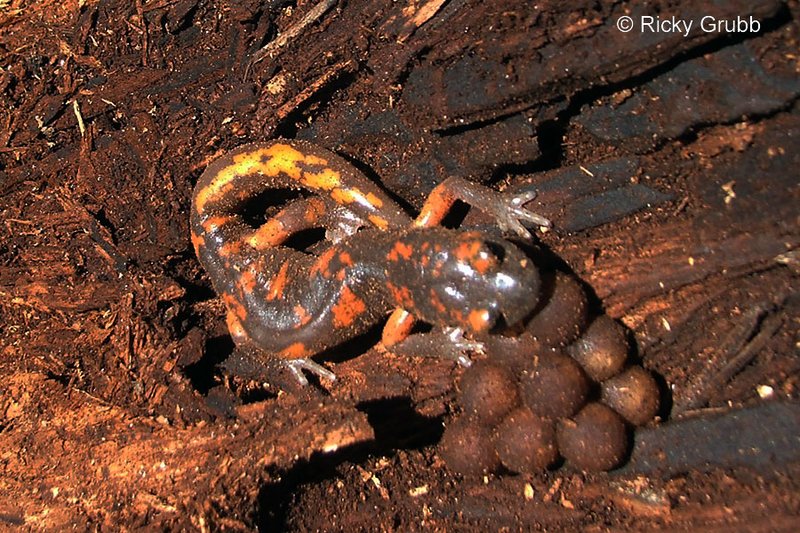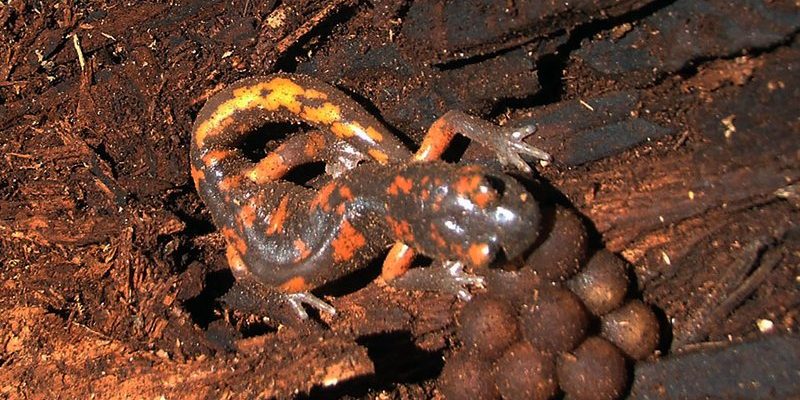
Salamanders are not just ordinary critters; they’re part of the amphibian family, which means they live both on land and in water. There are over 700 species of salamanders, each with its quirks when it comes to reproduction. Some lay eggs in water, while others have more inventive methods. So, grab your favorite drink, and let’s dive into the captivating breeding and reproductive behaviors of these slippery little creatures!
The Life Cycle of a Salamander
The life cycle of a salamander is divided into several key stages: egg, larva, juvenile, and adult. Understanding these stages helps set the stage for their reproductive behavior. Most salamanders begin their lives in water, as eggs laid in moist environments like ponds or streams. You might see clusters of jelly-like eggs, which can hatch into larvae within a few weeks.
Once the larvae emerge, they often look completely different from their adult forms. They have gills and a more fish-like appearance, which is perfect for their aquatic lifestyle. As they grow, they undergo a transformation called metamorphosis—almost like a butterfly emerging from its cocoon. They develop lungs, lose their gills, and become more adapted to life on land. Just imagine that incredible change!
Throughout different regions and species, the timing of these life stages can change dramatically, depending on environmental factors such as temperature and moisture. This adaptability is vital for their survival and reproduction.
Types of Salamander Reproduction
Salamanders have two main types of reproduction: external fertilization and internal fertilization. Each method has its own characteristics and challenges.
1. External Fertilization: Many aquatic salamanders, like the spotted salamander, lay their eggs in water. During this process, the female lays her eggs, and the male releases sperm over them, fertilizing them outside of her body. This method relies heavily on the right environmental conditions. If the pond dries up too early, those eggs can be in serious trouble.
2. Internal Fertilization: On the flip side, some terrestrial salamanders, like the Eastern red-backed salamander, engage in internal fertilization. The male transfers sperm directly to the female for fertilization. This can be quite the intricate process, often involving a “courtship” where males display vibrant colors or perform dances to attract females. It’s like a mating ritual where only the best dancers get a chance to pass on their genes.
Both methods have their advantages and disadvantages, depending on various factors like habitat and climate.
Salamander Courtship Displays
Courtship in salamanders is nothing short of a ballet. Males often engage in elaborate behaviors to woo the females. For instance, the Siren salamander may wiggle its tail or release pheromones to signal its intentions. These displays are crucial because they help females choose the strongest partners—much like how we often look for traits like confidence or charm in a partner.
Many species have specific rituals that can include physical displays such as:
- Colorful body movements
- Fragrances to attract females
- Vocalizations or calls to signal presence
This combination of factors helps ensure that the most fit individuals reproduce, giving their offspring the best chance of survival in a competitive environment.
Nesting and Egg Laying
The way salamanders nest and lay eggs can vary significantly based on species. Some prefer to lay their eggs in water, while others choose terrestrial environments—sometimes even inside rotting logs or under leaf litter.
For instance, the California tiger salamander lays its eggs in temporary ponds formed after rain. These fertile areas provide a perfect hiding spot from predators while offering a nutrient-rich environment for the developing larvae.
Interestingly, some *land-dwelling* salamanders, such as the boreal salamander, will actually care for their eggs by staying close to them and guarding against threats. This form of parental care helps increase the chances of their young surviving to adulthood.
Environmental Factors Affecting Reproduction
Salamanders are highly sensitive to their surroundings, and environmental factors can significantly impact their breeding success. Changes in temperature and moisture levels can alter when and where they mate.
For example, temperature fluctuations might cause some species to breed earlier in the year or delay their mating altogether, depending on conditions. Similarly, a lack of moisture can dry up ponds essential for egg-laying, forcing them to adapt and find alternative environments.
Moreover, pollution and habitat destruction pose significant threats, affecting not just the salamander’s ability to reproduce but also their overall populations. This is a growing concern as human activity continues to encroach on natural habitats.
Challenges in Salamander Reproduction
Despite their fascinating behaviors, salamanders face numerous challenges when it comes to reproduction. There are several threats they must navigate, including:
- Loss of habitat due to urbanization
- Climate change impacting breeding habitats
- Pollution affecting water quality
- Predation and competition from other species
These challenges can lead to declining populations, making conservation efforts vital to protect their habitats and ensure future generations can thrive. It’s more than just saving adorable creatures; it’s about maintaining the entire ecosystem.
Conservation and Protecting Salamanders
Conservation efforts are essential to support salamander populations. Many organizations focus on preserving their habitats and educating the public about the importance of these amphibians. For example, establishing protected areas around breeding grounds can help ensure that salamanders have safe spaces to reproduce.
Additionally, researchers are studying ways to restore habitats and reduce pollution impacts. Community involvement can also make a difference; simple actions like being mindful of water usage or avoiding harmful pesticides can contribute positively to their survival.
In closing, safeguarding salamanders isn’t just about the animals themselves; it’s a broader commitment to protecting biodiversity and the health of our environment. So next time you see a salamander, take a moment to appreciate the wonder of their reproductive behaviors and the critical role they play in our ecosystems. Every little effort counts in helping these amazing creatures thrive!

